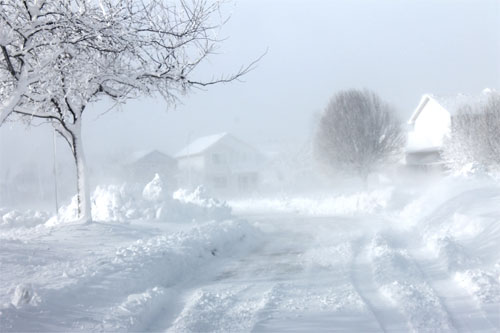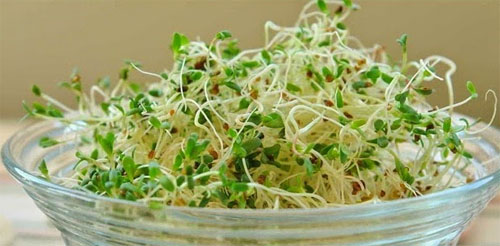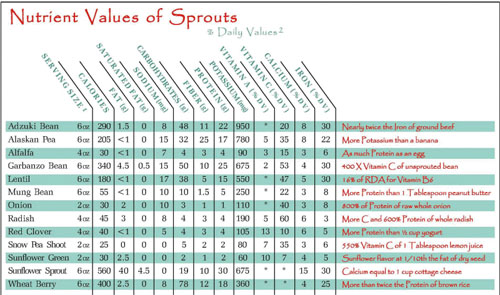The Occidental Arts & Ecology Center (OAEC) is an 80-acre research, demonstration, advocacy and organizing center in Sonoma County, California. We live in a time of profound challenges that require immediate, courageous and strategic responses. We are confronted by global ecological and climate crises… OAEC supports diverse communities to design their own regenerative systems at the regional and local scale. OAEC supports change makers and communities to design for a resilient future.
There are other organizations like this one that are helping us plan specifically for our areas. Sometimes the processes of one situation can be used as a template, adapted for another area, the basic premises, sequences holding across the board.
July 2019 Kollibri Terre Sonnenblume’s latest article was published. The title reads: Our Veggie Gardens Won’t Feed us in a Real Crisis As things stand right now, for most of us he’s right.
As Veg Gardeners we are emissaries to all who would grow food! In a serious crisis, our skills may be called on to feed many people. Kollibri’s provocative article makes you think about how important our growing can be in these times of extreme climate situations.
Some of you may be permaculturists, already knowing about collaboration with the land, sustainability, self-reliance, having multiple support/backup systems. Others of you may be rank gardening beginners. Most of us are in progress. We need you all!
Kollibri’s experience is his. There are many stories to be told, many responses possible. Some of my thoughts and responses include:
- Select safe land for your growing space carefully for the long term. Anticipate what changes you can, timing as possible. Have a backup plan in mind. Yes, there will be unanticipated events – a microburst storm, a devastating foreign insect coming through, huge hail where it hasn’t happened before, others.
- Change your diet. In a crisis you might expect to let go of meat, diary, and grains, or reduce your intake dramatically. Instead of beef, raise fish or other animals, perhaps. Maybe your choice will be animals that provide milk and fur. How about chickens? They poop manure, scratch, eat insects, make eggs!
- Learn about soil. Check out the soil chapter in the book Gaia’s Garden!
- Plant efficient per square foot plants. Our small 10X20 Community Garden plots teach us that. Those plants can be high producers like zucchini, plants that produce prolifically all season long, or cut and come again types like lettuces and kales. In summer string beans are super producers – broad beans and long beans give you more bean for the space they take up!
- Plant Perennial plants, like Tree Collards, for continuous crop all year and year after year.
- If you have cold winters, plant potatoes that store well. In summer plant winter squashes that store well in winter. Set up an in-the-ground greenhouse to equalize seasonal temps.
- Learn about Succession Planting. While one plant is growing, plant another round. Some plants are started every week.
- Learn about Seed Saving so you allow time and space for that type of production as well.
- Plant year round habitat for birds to keep pests down, and for bees and other pollinators to keep pollination going.
- Check out what the indigenous ancestors in that area survived well on. Restore some of that process. It could be an efficient food/garden forest. Could be ‘Tending the Wild,’ using edible native plants, as Kat Anderson writes about. If your land is hilly, terracing is a phenomenal and beautiful technique. If your land is flat, build bioswales to collect water, hold moisture.
- Plant plants that have over-the-top nutritional value like fast grower Garden Purslane, pur·sluhn, aka Verdolaga south of the border.
- If you are planting for a family, consider the special food needs of children, people who are ill, elders. Plant herbs for medicine.
The Gardener’s New Emergency Kit Bag!
SEEDS A gardener’s emergency kit bag is a little different! It likely includes important select seeds for all seasons in an airtight container! Select some productive fast growers, like lettuce and radish (has edible leaves too), and ones of plants that produce all season long. Select bush and pole beans, determinate and indeterminate tomatoes. Select heat, drought and cold tolerant plant seeds. Some will grow earlier crops that produce in cool weather! Some survive heat, grow later and more healthily in fall. Some will survive frosts, even freezing. Be sure to have seeds for all seasons. Some areas, especially flooded areas, it isn’t recommended to grow edible plants there for at least one full season, so you need access to fresh soil and to be prepared for every season. Remember, you won’t be the only hungry people. Take as many seeds as possible. Seeds for flood soil restoration. Seeds for sprouts!
SOIL If you anticipate you would need ‘soil,’ whether you would be able to leave in a vehicle or intend to stay where you are, keep a couple or more bags of fresh clean compost around at all times. You can plant directly in compost. Remember, kitchen scraps can be processed to be used to make more compost. Think about including a lightweight folding shovel in your emergency kit.
What if you live in an apartment? Growing food in a north facing window system would be a challenge – not enough sun. If you have power, set up some grow lights. These days, thoughtfulness about your directional window placing could become vital. Install window solar power devices for when your power is off! Many a fine container garden has been planted in windows, on balconies, along the stairs, on the walls, a pallet leaning against the wall, in hanging baskets, on trellises made of strings or wire. Creativity abounds! Also grow tasty high protein sprouts!
Weather Crises are now unpredictable. The modern survivor needs to be prepared for any kind of emergency at any location, at any time.
IN a Crisis situation, burning heat, a water wipe out, an extended freeze, it’s over. What do you do? In a worst case scenario, there may no longer be a nursery or transplants at it. Most crops planted from seed take two+ months to get into production. Lettuce/Microgreens are really fast, but even they take about two weeks minimum. Radish, an incredibly fast grower, takes about a month. Transportation may be an issue. You may need to migrate to land that has plants to forage. Carry your lettuce plantings with you – wagon, cart, bicycle, grocery cart, sleep with them to protect them. You may become vegan for a while. You may not be happy, but you won’t die, probably will lose some weight! Succession planting becomes a necessity.
Always have an emergency backup supply of dry food for until your new plants become available to eat. Be sure your food supply takes up little space and weighs little. You want to be able to carry it comfortably if need be. In airtight/waterproof bags pack: Jerky, nuts, the least bulky dried vegs and fruits. Make a trail mix of nuts for protein and dried fruits that are high in Vitamin C: Raisins, Peaches, Pears, Bananas, Apricots, Longans, Litchis, Cranberries. Include trail bars that don’t melt or freeze. Keep a ready lightweight waterproof backpack.
Heat – Maybe Drought, Fire
In a serious heat situation you may need to migrate north to a cooler higher land or coastal land with access to clean water. Plant right away in a sheltered, perhaps shaded area, use shade cloth if you can get it, branches if you can’t. Choose a north facing slope for less sun. If there is no slope, build one as you can. Put up porous windbreaks to slow drying wind. If the soil is sandy, compost, compost, compost for water holding capacity. Bring seaweed from the ocean if you are coastal. Mulch to cool down the soil. If it is windy, put shade cloth, heavy branches, stones or other cover to hold the mulch in place, especially if your land is sloped. The Zuni used ‘gravel,’ handpicked pebbles as ‘mulch’ in their waffle spaces. Use the old Zuni humble technique of Waffle gardening. They knew how to garden in heat! If planting in trenches, make them deeper and at right angles to the Sun’s path to take advantage of the shade the sides of the trenches make.
Simplest and cheapest is to set up an underground greenhouse to equalize seasonal temps. Make it the right size for your needs. Dig it right into the side of a hill or slope if possible. You want that shade and shelter for both you and the plants. Check online for the pros and cons of building bank barns for your animals. Bank buildings can be improvised to suit a temporary immediate need, or planned to the inch if built for long term use… Fastest and next cheapest are Hoop houses! See Growing Super Veggies in HOT, Drought, Desert Areas!
In the most urban situations like New York City, use those balconies, the rooftops, a window! Just be sure the balcony or roof will support the additional weight of soil and water. Whenever you rent choose a place that has 8 hours of sunlight. Wherever you plant, choose highly productive plants per square foot. Pole beans on a trellis! Bush Zucchini. Cut-and-come-again plants like chard, celery, lettuce/microgreens, kales. Chard, celery and lettuce need a lot of water. Otherwise, choose plants that are heat and drought tolerant.
Walipini Pit Greenhouse! How a Walipini works and how to build one!
Great tips here: Underground Greenhouse Ideas: What Are Pit Greenhouses
In the long term, plant more trees like fast grower legume trees that feed the soil and cool the Earth. Plant them in Bioswales that hold moisture. The trees make shade, hold even more moisture, secure the soil with their roots. If possible, start where there is an initial water supply.
Beautiful Nature Walk Bioswale at Dawn, Duarte CA by BlueGreen Consulting
Flood
This is no longer new to us, but it’s a dramatic example. 7.23.19: Less than a month after New York City declared a climate emergency due to a heat wave, the reality of the crisis came crashing home Monday as streets across Brooklyn and Queens were inundated with dirty water flash flooding a day after power went down in three boroughs. These New Yorkers aren’t going to be growing much of their own food right now. But, do what you can! Use those balconies, the rooftops, a window that receives sun. A LOT can be grown in small spaces! Choose apartments wisely – sun facing in case you need that sun.

July 2019 NYC: Heat Wave, Blackouts, Flood back to back.
Some consider floods to be worse than droughts. Flood soils are dangerous, mask and gloves needed when you do remediation. You may not be able to grow edible plants there for at least a season.
You don’t want to plant in low areas after a flood. There are sewage, oils, plastics, garbage, disease in that water – likely Giardia, sometimes dead animals and humans, their fecal matter, fecal matter from nearby animal/chicken farms. Afterwards there are decaying materials. The soil that remains may be infected for a long time to come. Your first tactic would be to plant quick growing detoxing grasses, sunflowers and other plants that remove crud. Grow plants that reach deep into the soil and loosen its structure. Turn the soil to off gas toxins and so dangerous soil organisms will dry and die. Incorporate fresh clean compost. See more ideas
If your veg garden got flooded, here are some important tips. Shasta CA Master gardener Leimone Waite gives good 2023 information! West Virginia U Extension Horticulture Specialist Lewis Jett has further advice. Adapt these informations to your area.
Planting in lowlands, below dams or water barriers, may not be the wise choice these days. An unusual amount of fast high water can blast right through these structures. The face of agriculture is changing. Grains and corn may become unprofitable choices, equaling less beef, higher prices. Water may bring silt and fertile soil or fast flooding may wash away all the topsoil leaving nutritionless, even dirty, soil. For your personal situation, choose higher land. If needed, protect it with terracing, done with a combination of bioswales and Hugelkultur. Choose the cleanest soil you can find to plant in.
Soil Restoration Please see this List of Phytoremediation Plants Used to Clean Contaminated Soil. Alfalfa grows quickly. Sunflowers take longer but are pretty. Willow trees. Per Anita B. Stone ‘Indian Grass is one of nine members of grasses that assist in phytoremediation plants. When planted on farmland, the reduction of pesticides and herbicides is significant. This list also includes Buffalo grass and Western wheatgrass, both capable of absorbing hydrocarbons from the land.’ Be sure to grow grasses appropriate to your location, native grasses if possible. Put some alfalfa and grass seeds in your emergency kit!
Three things are important! 1) Install a ground cover of water absorbing plants to detox the soil if you must replant in areas that have flooded. 2) Plant quick growing legume soil feeding plants and trees to feed and restore the soil. 3) Include plants that will grow deep and break up that soil, that make breathing airways for soil organisms that will help clean up the soil. Oats are good.
Rapid Run Urban Bioswale, Seven Hills Neighborhood, Cincinnati OH The learning curve was steep…
In the long term, in non-urban areas, or urban areas that are interspersed with land, build bioswales that interrupt stormwater flow and divert it to areas that need water! Interrupt flooding with many bioswales – just like in nature. Remember these words: Slow, Sink, Spread! Put rough big materials in the bottom to slow that water down so it has time to sink. Cleverly make that bioswale curvy – install ‘S’ curves, to slow that water down! Make side branches, bulges along the way, and deltas to spread that water. Again, make generous stormwater retention ponds along the way.
A big 2¢ worth from Cornell! Woody Shrubs for Stormwater Retention Practices
China is building 30 ‘sponge cities’ that aim to soak up floodwater and prevent disaster
Freezing or an Extended Period of Exceptional Cold

There may be no snow plow, cell service; electricity may be out. It’s not safe outdoors for humans or pets, farm animals, livestock. Fishing at the lake through an ice hole may be all that’s left, IF you have a lake, if it has fish…
In an immediate situation, a southern migration may be in order, preferably to land with a clean water supply. If you stay, go Vegan, at least temporarily. Building a greenhouse may be a challenge. We want warmer, to reduce wind chill. The ground may be frozen, so no underground greenhouse yet. But you can build along a south facing slope, even a snowbank! If there is no slope, build one. Gather and pile up any materials at hand. Make the face from wood panels, plastic sheets, old windows, even logs and branches can do the job. At each side put up permeable wind barriers that make a U shape with your ‘greenhouse’ and let the area inside the U warm up. Use any reflective materials you can find to reflect heat onto your greenhouse.
In the long term, well in advance, build a greenhouse. Such a greenhouse can be built in the ground during summer months when the soil can be worked. Homesteaders in -40° weather, used their garage and came to two prime conclusions. #1 is Insulation! No surprise. #2 was their water tanks, a thermal mass that kept their water buckets near the tanks from freezing solid! They needed water for their plants! You can put in stoves, showers, sleeping quarters! Store foods you want to be cold well away from the stove area. Clearly, light is needed. That’s why a greenhouse against a slope or a mound you make is a practical idea. The south facing side can have light allowing material slanted against it steeply enough the snow falls down. If you want to collect it to make water, all the easier. Depending on what you want to do, snow can act as insulation. See excellent tips at SF Gate: How to Keep a Greenhouse Above Freezing. When you can, install a self-sufficient Solar Power System for energy to keep your plants warm, lighted and growing.
Green Sprouts in the Canadian Arctic A unique “Green Igloo” project is helping grow fresh vegetables in a remote Inuit community! The 42-foot growing dome, built in modular sections, can handle seven feet of snow and winds up to 110 miles per hour.
Keep extra bags of compost/manure, to plant in while soil isn’t available. Grow cold-tolerant crops that can even tolerate a freeze. Harvest frugally. Plants grow slowly when it’s cold. Grow plants that regrow – like lettuces/microgreens, bunch onions, spinach, chard, Kales. Plant successively to keep supplies coming. While one plant is regrowing you can harvest another area.
We have now discussed Greenhouses for both heat and freeze temps needs. Underground greenhouses accommodate both situations with less difficulty. Just be sure to make them safe from flooding or snowmelt. Bioswales work well with planting more trees and diverting water, making more space for the natural flow of water.

We haven’t talked about SPROUTS! Technically, growing sprouts isn’t gardening, but it’s a relative! In all cases, Heat, Flood and Freeze they can be grown easily and super quickly, 2 to 5 days, in light weight containers. Select seeds that have plenty of protein! Make a fast growing mix and a slower mix. Mix in some spicy seeds for tasty results. You do need water to rinse them and they need to be kept warm. You could carry them in your jacket when it’s cold. In the diagram below, particularly note the grams of Protein!

Please right click on image, select ‘Search Google for image’ to see a more clear image.
If you are starting over, you might consider a Food Forest. If you have enough land with good soil, they have special advantages, including the possibility of mitigating crisis situations. Same goes for the use of Permaculture techniques, which might include a Food Forest. Food Forests often start with, may already have trees you want in place. They can provide shade and windbreaks. Wood for winter. Food Forests provide high density production per square foot, a variety of foods and living needs in a much smaller space! It would serve you well to read up on both and possibly modify your long term plans for a safer, more sustainable and comfortable life.
Not everyone likes or wants to garden. If you are evacuated, right away select a food person. Could be an experienced veg gardener who knows how to get things going again. They will work intuitively and be innovative on their feet as needed. Select someone who has a natural inclination. If no one in your group likes gardening, appoint someone responsible and practical to do it anyway. Give them your support by working side by side with them as much as possible. It’s a start. Some people don’t yet know they would like to garden! Show them what you are growing; give them a few samples of your 100% fresh organic food with no packaging! That full bodied taste and fresh texture makes a huge difference! Someone who loves gardening enjoys the work it takes. A greater amount of fresh food will need to be grown to meet initial crisis needs.
Some of us Community Gardeners are considering meeting together if there is a serious crisis and we would evacuate together if need be. We could help people with the food situation. Local permaculturists might form a team to help our community in extreme circumstances. They might train for different kinds of climate situations. We need Permaculture First Responders on staff! Farmers might join an advocacy association to train key gardeners about mass production techniques. Neighborhood associations could create a seat on the council for a person to get knowledgeable and take charge of crisis food needs. Certain centrally located secure homes could be appointed as gathering places. Homeowners that already have veg gardens could be assisted to produce more.
We have been talking about temporary survival fixes in extreme circumstances. The important key to all is responsible land stewardship toward regenerative agriculture. See about Crater Gardens! Sepp Holzer has one! Do read the comments at this page. Create your own to suit your space and needs!

Plan and support Regenerative Agriculture!
This post is intended to be provocative in its own way. Please think about it, let us know your ideas, make comments, ask questions, share your experiences. This has been in the back of my mind for some time and is still in progress. Our solutions now will undoubtedly change as circumstances change, unfold. It will take all our collective genius. People who have lived alone will find themselves suddenly thrust into collaborating. Life will be changing for all of us. We’re in it together.
Be safe, be well, tend your future just as you would your garden ~ it is a garden of another kind!
Updated 3.25.23
Sharing is Caring! Let’s get the word out!
Love your Mother! Plant bird & bee food! Think grey water! Grow organic! Bless you for being such a wonderful Earth Steward!
The Green Bean Connection newsletter started as correspondence for the Santa Barbara CA USA, Pilgrim Terrace Community Garden. Both of Santa Barbara City’s remaining community gardens are very coastal. During late spring/summer we are in a fog belt/marine layer area most years, locally referred to as the May grays, June glooms and August fogusts. Keep that in mind compared to the microclimate niche where your veggie garden is. Bless you for being such a wonderful Earth Steward!





 Bio-drilling is what happens when you use a cover crop’s natural talents to “drill” into compacted subsoil. For example, you might grow oilseed or daikon radishes as a cover crop where their spear-shaped roots will stab deep into tight subsoil. Bio-drilling action also takes place when deeply rooted cover crop plants penetrate subsoil and die. Then, the next crop grown may actually follow the rooting network mapped out by the cover crop. Maryland researchers were able to track this process using special camera equipment (a minirhizotron), which took pictures of the interactions between cover crop (canola) and crop plant (soybean) roots. As the canola’s deep roots decomposed, soybean roots followed the trails they blazed in the subsoil, hand in glove. In addition to reduced physical resistance, the soybean roots probably enjoyed better nutrition and the good company of legions of soil-dwelling microcritters, compliments of the cover crop.
Bio-drilling is what happens when you use a cover crop’s natural talents to “drill” into compacted subsoil. For example, you might grow oilseed or daikon radishes as a cover crop where their spear-shaped roots will stab deep into tight subsoil. Bio-drilling action also takes place when deeply rooted cover crop plants penetrate subsoil and die. Then, the next crop grown may actually follow the rooting network mapped out by the cover crop. Maryland researchers were able to track this process using special camera equipment (a minirhizotron), which took pictures of the interactions between cover crop (canola) and crop plant (soybean) roots. As the canola’s deep roots decomposed, soybean roots followed the trails they blazed in the subsoil, hand in glove. In addition to reduced physical resistance, the soybean roots probably enjoyed better nutrition and the good company of legions of soil-dwelling microcritters, compliments of the cover crop. Last month we looked at
Last month we looked at 

